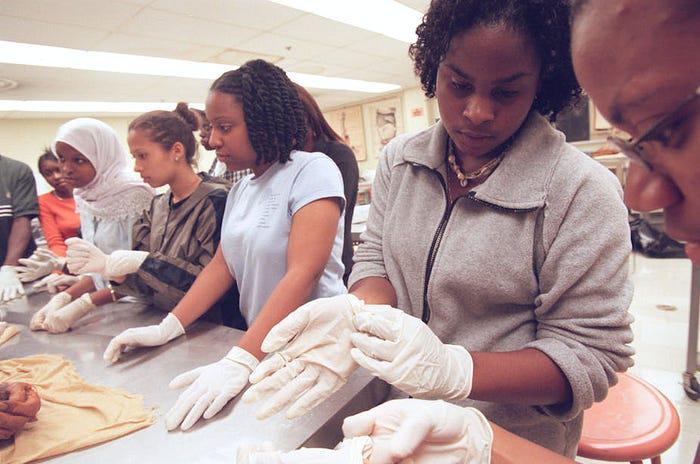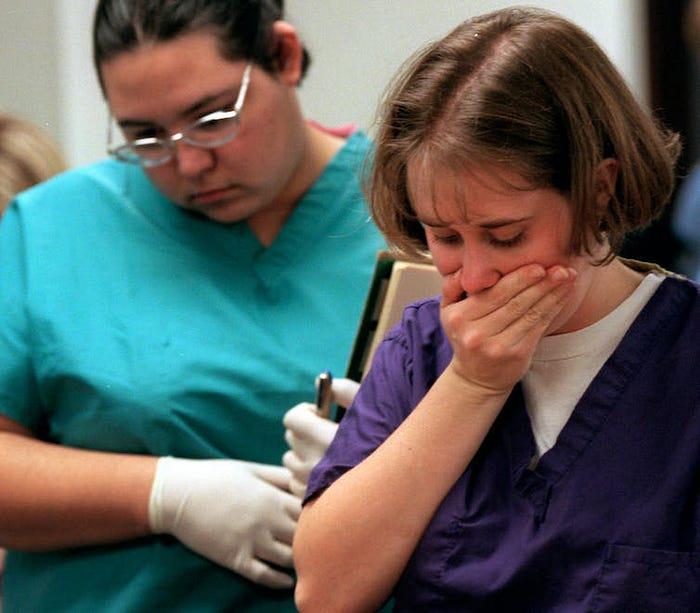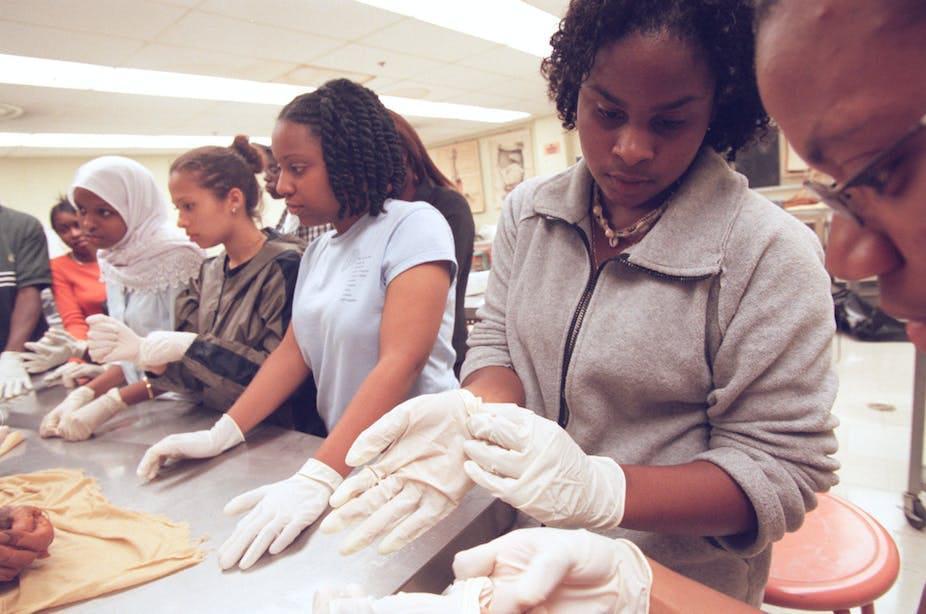Eli Shupe, Assistant Professor of Medical Humanities and Bioethics at the University of Texas at Arlington and Co-Director

Every year, first-year medical students approach human cadavers with a mix of awe and trepidation. They will come to know their assigned cadaver intimately. Throughout the course of study, they will learn the fundamentals of human anatomy, carefully peeling back layers of skin, muscle, and tissue.
Once the lengthy dissection process is complete, the cadaver is cremated, and the remains are either returned to the family, interred in a dedicated plot, scattered in a memorial garden, or sometimes buried at sea.
Historically, anatomy labs relied on unclaimed bodies or executed prisoners, and even turned to graves to meet the increasing demand for cadavers. Today, we want to believe that every body on the slab was intentionally donated, but in reality, thousands of Americans will leave their bodies to science each year. The reality is more complex.
In the United States, when the deceased's assets are insufficient to cover burial or cremation costs, and next of kin cannot or will not bear the financial burden, it falls to the state or county where the person died to arrange for their remains' disposition.
In most areas, officials can donate these unclaimed bodies to higher education institutions without the legal requirement of prior consent from the deceased or next of kin. In 2019, 12.4% of U.S. medical schools surveyed indicated the availability of unclaimed bodies for use at their institutions.
As a professional medical ethicist, I was surprised to learn about the ongoing use of unclaimed bodies in medical education in 2021 and began to discover the extent of the practice in Texas. These efforts culminated in a peer-reviewed, comprehensive study on cadaver procurement trends within a single state, and the findings were astonishing.
Between 2017 and 2021, the number of unclaimed bodies accepted by Texas medical schools nearly increased sevenfold, rising from 64 to 446, an increase from 2.27% to 14.12% of all donations over five years.
Money Plays a Role
Budget pressures may have played a small role in driving these trends. In the U.S., the average cost of cremation without a service is currently about $2,000. Some states or counties may offer burial for unclaimed bodies if there is a credible reason to believe the deceased would not want cremation for religious reasons, but the money comes from county or state budgets, making it a more expensive option.
Medical schools not only cremate bodies received without charge, but many also offer discounted cremation rates for the bodies provided, which do not meet the requirements for human remains.
In densely populated areas with a higher number of unclaimed bodies, these savings can add up. Tarrant County, Texas (City of Fort Worth) has saved hundreds of thousands of dollars annually through contracts with local medical schools.
Ethical Controversies
In this regard, medical students are sometimes kept in the dark about the use of unclaimed bodies at their institutions.

Mary Peeler, a graduate of Johns Hopkins University School of Medicine, learned from a faculty assistant that her body was unclaimed only after the dissection process had already begun.
She wrote in the New England Journal of Medicine, “I am still devastated.”
What we know about the demographics of unclaimed bodies suggests that they are more likely to be male, more likely to be African American, and more likely to have been poor or unemployed before death than bodies claimed by next of kin. Some who have spoken out emphasized that those who can be dissected without consent are disproportionately the most vulnerable members of society.
The International Federation of Associations of Anatomists has issued professional guidelines calling for anatomists to cease the use of unclaimed bodies, and a handful of medical schools have decided to stop accepting them. For example, Oregon Health & Science University ceased accepting unclaimed bodies in 2009 after the sister of a man who was mistakenly donated to the university came forward.
Prohibition on the Use of Unclaimed Bodies
If the use of unclaimed bodies is increasing in Texas, is the same happening elsewhere? Right now, we simply do not know. While the donation of unclaimed bodies has some peculiarities, it remains legal in the majority of states in the U.S.
In 2016, New York banned the use of unclaimed bodies without the written consent of the deceased or next of kin, a move that faced strong opposition from a consortium of 16 medical schools. Several other states, including Hawaii in 2012 and Vermont in 2014, have passed similar legislation.
In 2021, I decided to donate my body to science. It took 30 minutes and the presence of two witnesses to sign paperwork proving I was sound of mind and fully informed of my decision. Many Americans may have made the exact “donation” without putting pen to paper. Instead, all they had to do was die poor and alone.
This article is from The Conversation, an independent nonprofit news organization dedicated to sharing academic expertise. Learn more about them or subscribe to their weekly newsletter.
Eli Shupe does not work for, consult, own shares in, or receive funding from any company or organization that would benefit from this article, and has disclosed no relevant affiliations beyond their academic appointment.
